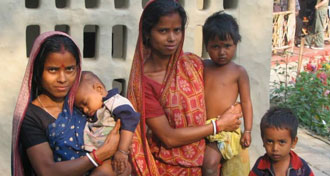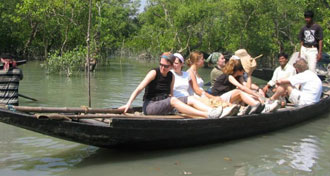The Sundarban

Sunderban boasts a mix of dense mangrove forests and a fabulous wildlife that attracts visitors like a magnet. The unique biodiversity of this delta wins applause from all those who visit it. The delta at the meeting point of the great rivers, Ganga and Brahmaputra covers a total area of 9630 square kilometers. Sunderbans flaunts 84 species of mangrove and mangrove-related plants, 200 species of birds, including herons, tree birds, raptors, egrets and many more. It houses the largest number of Royal Bengal Tigers in India. Out of the 102 islands at Sunderbans, 54 are inhabited and the people here make a living from agriculture, fishing and honey collection.

The majestic 'Royal Bengal Tiger' adds to the charm of the Sunderbans. This mangrove forest is the only natural abode of this tiger.
You will witness a range of unique and mysterious living beings in this water world. The wildlife includes Olive Ridley Turtles, Estuarine crocodiles, cheethals, wild boars, different kinds of fishes, dolphins, monitor lizards, otters, the King Cobra, and other snakes and mollusks.

Sunderban flaunts 84 species of mangrove and mangrove-related plants of different kinds. The alluvial soil nourishes striking flower plants, like Sundari, Harguja, and many others.
The human settlement at Sunderbans dates back to 600 years. The people here are dependent on agriculture, fishing and honey collection. The major edible fishes include bhetki, pomfret, hilsa, parshey and other fishes. Prawn seed collection also paves the opportunity for quick financial gains for the locals. The quintals of honey from the beehives, made by bees from the distant Himalayas are collected by the people.

The creeks and the tributaries meander their way through the delta, which is rich with vegetation and wildlife. The amazing diversity of Sunderbans mesmerizes everyone, and you should visit the Sunderbans to believe this.
